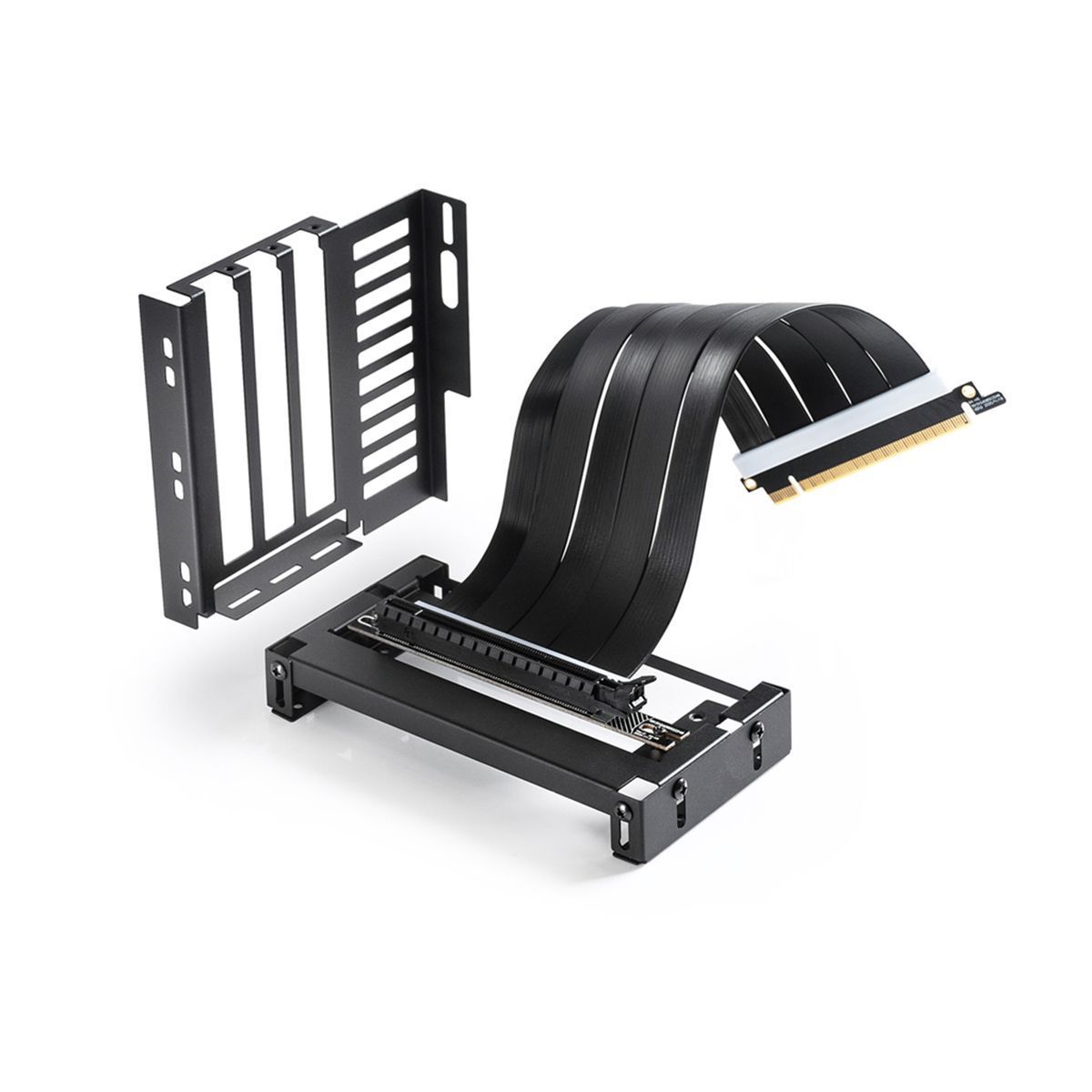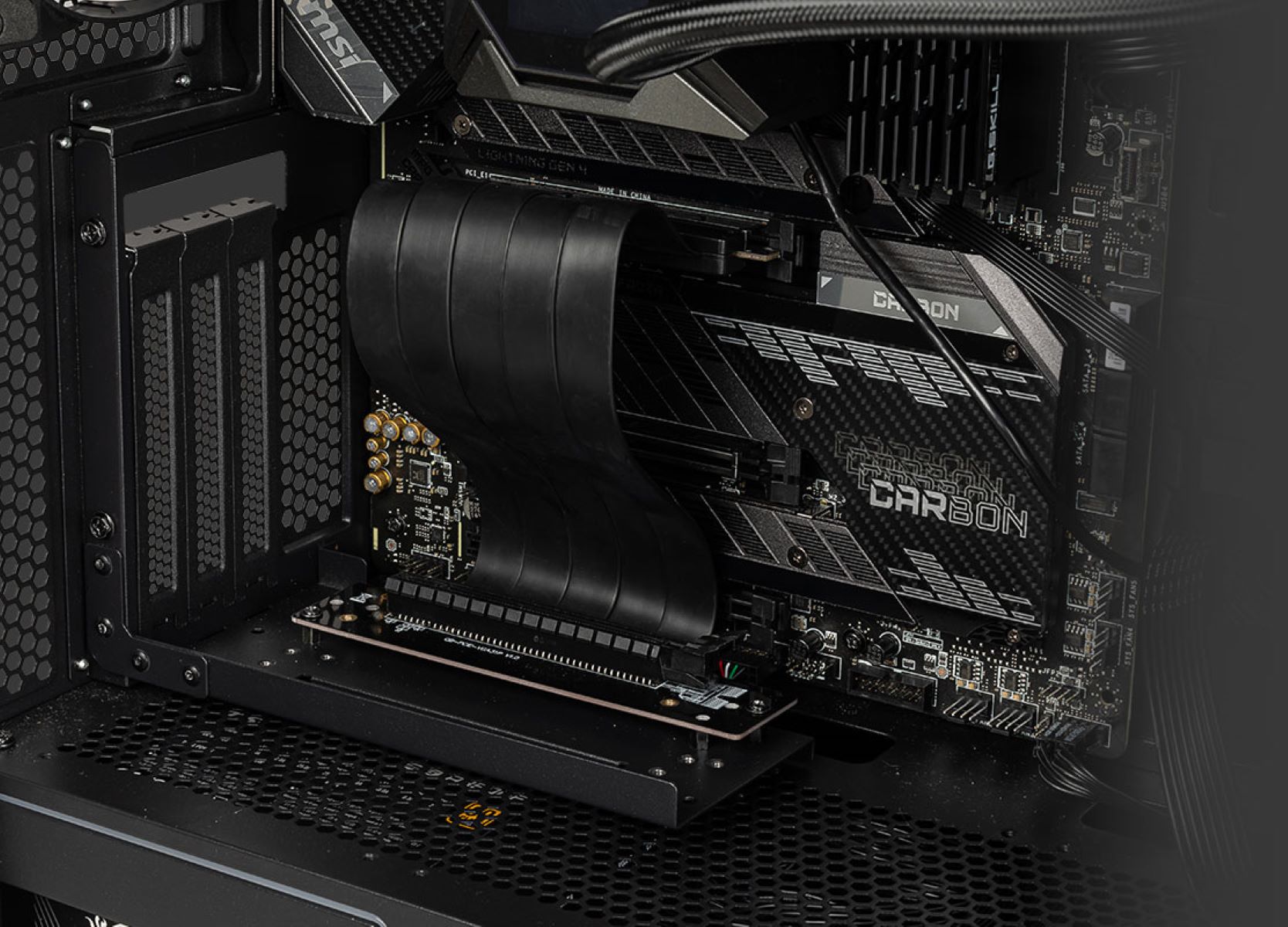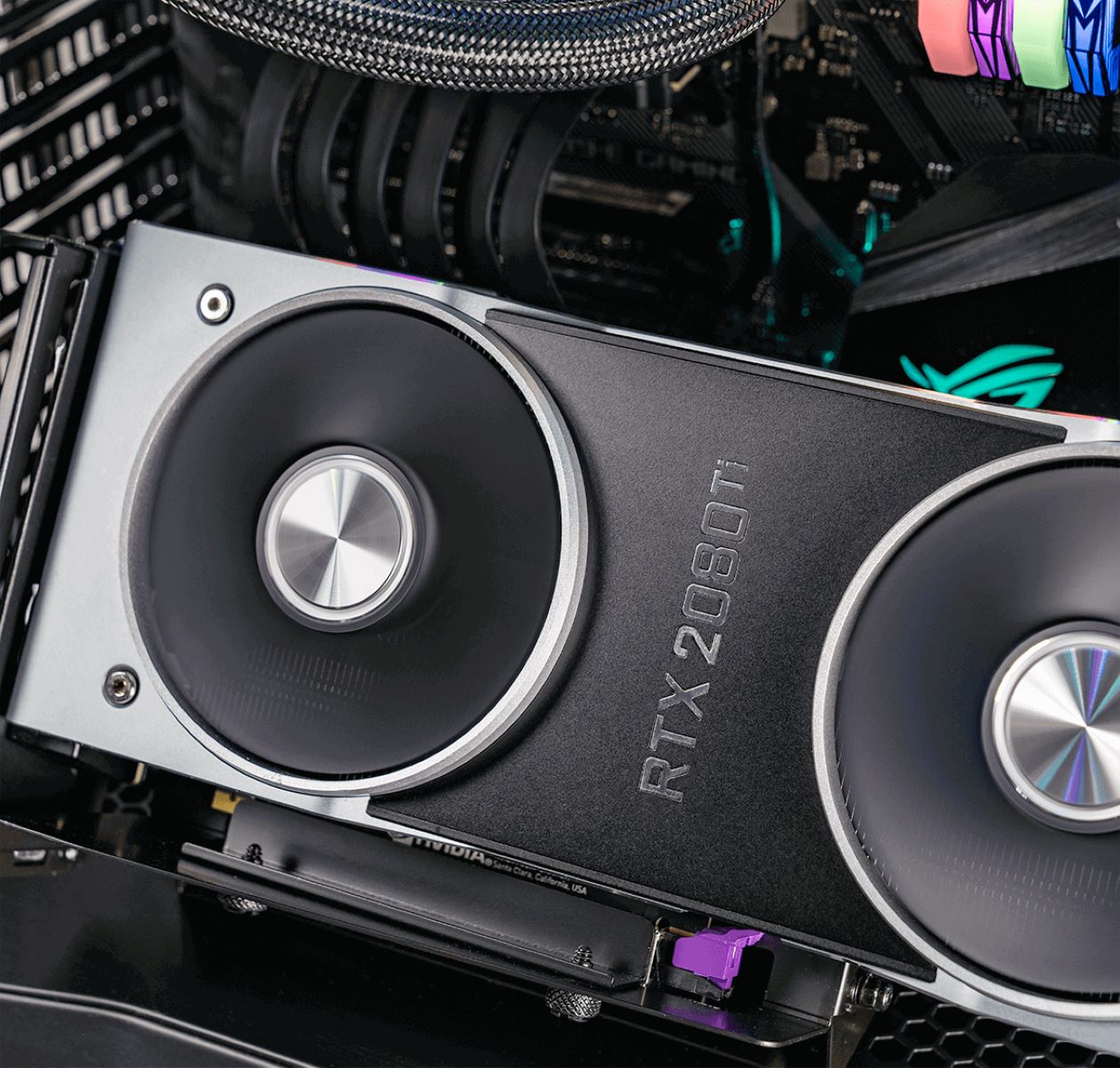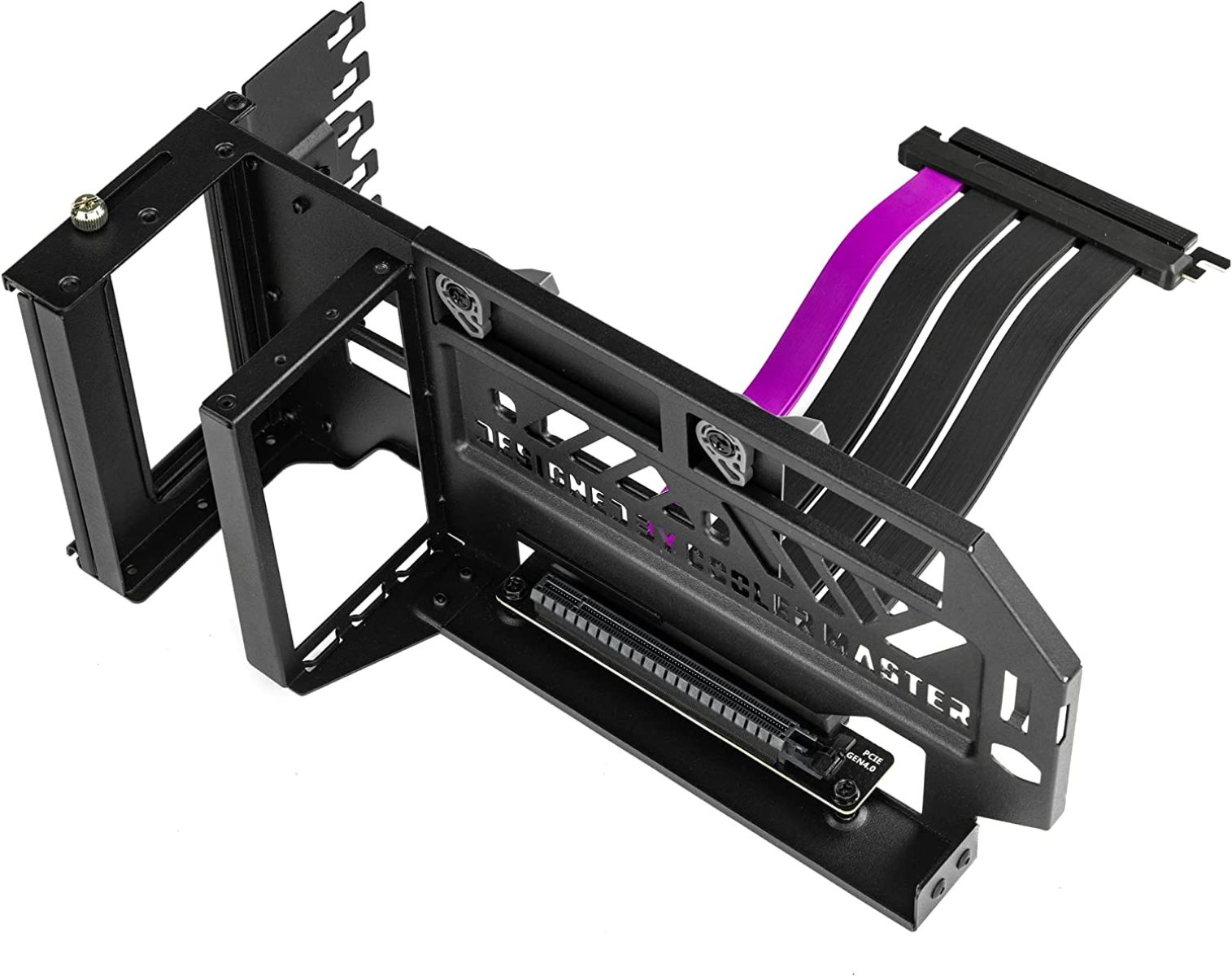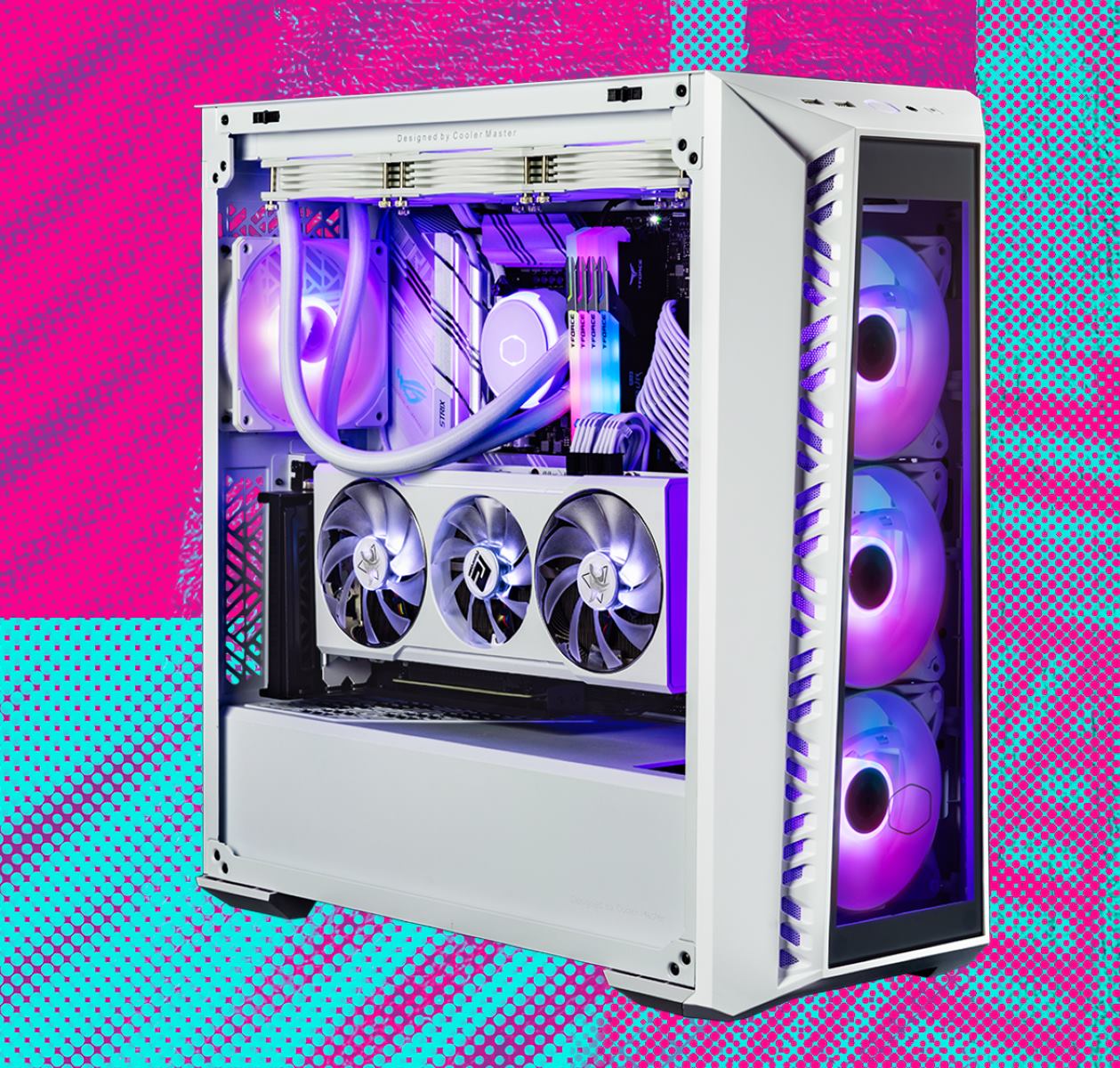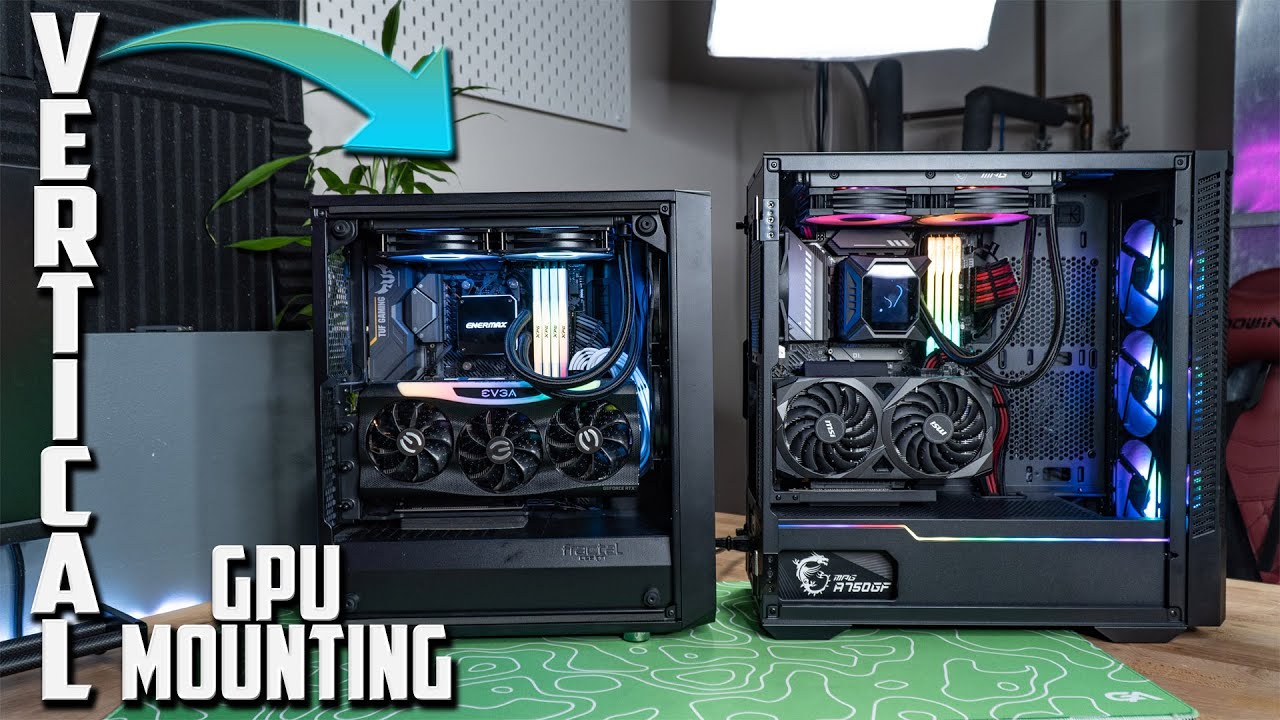Introduction
Welcome to our guide on Riser Cable GPUs! In the world of computer hardware, technology is constantly evolving. One such development that has gained popularity among tech enthusiasts is the use of Riser Cable GPUs. These innovative cables provide a versatile solution for mounting graphics processing units (GPUs) in a variety of configurations.
A Riser Cable GPU, also known as a vertical GPU mount, allows you to elevate your graphics card and position it vertically in your computer case. This eliminates the need for the traditional horizontal mounting on the motherboard. With a Riser Cable GPU, you can take advantage of the extra space in your case and showcase your GPU like a work of art.
But what exactly does a Riser Cable GPU do and how does it work? In this guide, we will delve into the details of this technology, explore its advantages and disadvantages, discuss different types of Riser Cables, and provide useful tips for choosing and installing the right Riser Cable GPU for your system.
If you’re someone who loves building and customizing your own PC, or if you’re looking to optimize your gaming rig, this guide is for you. We’ll guide you through everything you need to know about Riser Cable GPUs, from the basics to the nitty-gritty details. So, let’s begin our journey into the world of Riser Cable GPUs and discover how they can enhance your computing experience.
What is a Riser Cable GPU?
A Riser Cable GPU is a specialized cable that allows you to mount your graphics card vertically in your computer case, instead of the traditional horizontal orientation on the motherboard. It provides a flexible and neat solution for accommodating larger and more powerful GPUs, enabling you to showcase your graphics card and enhance the overall aesthetics of your PC build.
The primary function of a Riser Cable GPU is to extend the PCIe (Peripheral Component Interconnect Express) slot on your motherboard, allowing you to position the graphics card in a different location within the case. It consists of a flexible ribbon cable that connects the PCIe slot on the motherboard to the graphics card, along with an adapter to secure the GPU in its vertical position.
Why would you want to use a Riser Cable GPU? Well, aside from the visual appeal, there are practical reasons as well. Some computer cases, especially smaller form factors or those designed for specific purposes such as HTPCs (Home Theater PCs), may have limited space or alternative layouts that make horizontal GPU mounting difficult or impossible. A Riser Cable GPU provides a solution for these scenarios.
Moreover, a vertical GPU mount can improve the airflow within your case. By positioning the graphics card vertically, it allows for better ventilation and heat dissipation. This can help to keep your GPU temperatures lower, resulting in improved overall system performance and longevity.
Riser Cable GPUs are not just for gamers and PC enthusiasts. They are also popular among content creators and professionals who require powerful GPUs for tasks such as video editing, 3D rendering, and graphic design. With a Riser Cable GPU, you can have the performance you need without sacrificing the form factor or aesthetics of your workstation.
Now that we have a basic understanding of what a Riser Cable GPU is, let’s dive deeper into how it works and explore its advantages and disadvantages.
How does a Riser Cable GPU work?
A Riser Cable GPU works by extending the PCIe slot on your motherboard to allow for vertical mounting of the graphics card. The PCIe slot is the connection interface used to connect the GPU to the motherboard and allows data transfer between the two components.
The Riser Cable itself consists of a flexible ribbon cable with PCIe connectors at each end. One end of the cable connects to the PCIe slot on the motherboard, while the other end connects to the GPU. The cable is designed to transmit data, power, and other signals between the two components.
When you install a Riser Cable GPU, you need to ensure that your motherboard supports the PCIe slot extension. This is typically enabled through the BIOS settings, where you can select the appropriate PCIe configuration to activate the extended slot functionality.
Once the Riser Cable GPU is connected and enabled, the graphics card can be mounted vertically in your computer case using an adapter or bracket specifically designed for vertical GPU mounting. This adapter securely holds the GPU and ensures that it stays in place, even during transportation or movement of the computer.
From a functional perspective, a Riser Cable GPU works in the same way as a traditionally mounted GPU. The GPU still performs its primary tasks of processing and rendering graphics, whether it is positioned horizontally on the motherboard or vertically with the help of a Riser Cable.
When it comes to data transfer and performance, the use of a Riser Cable GPU does not have a significant impact. The PCIe slot extension provided by the cable maintains the same level of data throughput as a direct connection to the motherboard. However, it is important to note that the quality and length of the Riser Cable can affect performance, so it is recommended to choose a high-quality cable with appropriate shielding to minimize any potential signal loss or interference.
Now that we understand how a Riser Cable GPU works, let’s explore the advantages and disadvantages of using this technology in your PC build.
Advantages of using a Riser Cable GPU
Using a Riser Cable GPU offers several advantages that make it a popular choice among PC builders and enthusiasts. Let’s take a closer look at some of these advantages:
1. Aesthetic Appeal: One of the primary advantages of a Riser Cable GPU is the visual impact it provides. By mounting your graphics card vertically, it becomes a focal point of your PC build. This can be particularly appealing for those who want to showcase their high-end GPU or create a unique and eye-catching design.
2. Space Optimization: Compact PC cases or custom builds often face limitations when it comes to GPU clearance or available slots on the motherboard. With a Riser Cable GPU, you can overcome these constraints by positioning the graphics card in a different location within the case. This opens up possibilities for utilizing the available space more efficiently.
3. Improved Airflow: Horizontal GPU mounting can obstruct the airflow inside the case, leading to higher GPU temperatures. With a vertical GPU mount, the graphics card is orientated to allow for better ventilation. This helps to dissipate heat more effectively, resulting in improved thermal performance and potentially better overall system stability.
4. Noise Reduction: Some graphics cards come with multiple fans for cooling, which can generate noticeable noise when mounted horizontally. By using a Riser Cable GPU, you can position the graphics card away from other components or obstructions, reducing the noise level and achieving a quieter computing experience.
5. Customization Flexibility: A Riser Cable GPU provides more flexibility for customizing your PC build. It allows you to experiment with different layouts, showcase RGB lighting effects, or even modify the position and orientation of the graphics card according to your preferences. This level of customization can enhance the overall aesthetics of your build and make it stand out.
6. Cable Management: Riser Cable GPUs can contribute to better cable management inside the case. By extending the PCIe slot, you can route the cables more effectively, reducing clutter and improving the overall tidiness of your system. Neat cable management not only improves airflow but also makes maintenance and upgrades easier in the long run.
While these advantages make Riser Cable GPUs an appealing option, it’s essential to consider the potential disadvantages as well. In the next section, we’ll explore the downsides of using a Riser Cable GPU to help you make an informed decision for your PC build.
Disadvantages of using a Riser Cable GPU
While Riser Cable GPUs offer numerous benefits, it’s important to be aware of certain disadvantages that come with their usage. Below are some of the potential drawbacks of using a Riser Cable GPU:
1. Signal Degradation: IAny added cable can introduce signal degradation or interference, leading to a potential decrease in data transfer speeds. Lower quality or longer Riser Cables may be more susceptible to signal loss, impacting the overall performance of your graphics card.
2. Compatibility Concerns: Not all motherboards and cases are compatible with Riser Cable GPUs. Before investing in a Riser Cable, it’s crucial to ensure that your motherboard supports the required BIOS settings for enabling the extended PCIe slot. Additionally, some smaller form factor cases may not have enough space to accommodate a Riser Cable GPU, limiting your options.
3. Cable Length Limitations: Riser Cables come in different lengths, and choosing the right length is crucial for a successful installation. If the cable is too short, it may not reach the PCIe slot or allow for proper positioning of the GPU. On the other hand, excessively long cables can increase the risk of signal loss and introduce additional cable management challenges.
4. Stability and Reliability: Using a Riser Cable introduces an additional point of failure in your system. If the cable becomes loose or fails to make a secure connection, it can lead to GPU instability or even system crashes. It’s important to choose a high-quality Riser Cable and ensure a secure installation to mitigate these risks.
5. Price and Availability: Riser Cables can be more expensive compared to traditional PCIe extension solutions. Additionally, availability may vary depending on your location and the specific cable requirements. It’s crucial to factor in the cost and availability of a Riser Cable when considering its usage in your PC build.
6. Limited GPU Compatibility: Some GPUs may not be suitable for vertical mounting due to their cooling design or overall dimensions. It’s important to check the compatibility of your specific GPU model with a Riser Cable before making a purchase. Certain larger, high-end GPUs may not fit or may have limited cooling performance when mounted vertically.
Despite these disadvantages, many PC enthusiasts and gamers still find the benefits of using a Riser Cable GPU outweigh the potential drawbacks. It’s crucial to assess your specific requirements and limitations before deciding to incorporate a Riser Cable GPU into your system.
Types of Riser Cables
Riser Cables come in different types and variations to cater to different motherboard and case configurations. Let’s explore the most common types of Riser Cables available:
1. PCIe 16x Riser Cable: This is the most widely used type of Riser Cable for mounting GPUs. It allows for a PCIe 16x connection, which provides optimal performance for high-end graphics cards. It is important to select a high-quality 16x Riser Cable to ensure reliable signal transfer and minimize any potential signal degradation.
2. PCIe 8x/4x Riser Cable: Some motherboards have PCIe slots with reduced bandwidth, such as 8x or 4x slots. For such scenarios, specialized Riser Cables are available that support the corresponding PCIe lane configuration. These cables are suitable for use with lower-end GPUs or when the full 16x bandwidth is not a requirement.
3. Flexible Riser Cable: Flexible Riser Cables are made of a flexible ribbon cable material that allows for easy routing and bending to fit different case designs. These cables are ideal for small form factor builds or cases with limited space. However, it’s crucial to choose a high-quality flexible cable with appropriate shielding to minimize signal loss and interference.
4. Shielded Riser Cable: Shielded Riser Cables are designed with additional shielding layers to minimize electromagnetic interference and ensure reliable signal transmission. These cables are particularly suitable for situations where there are potential sources of electromagnetic interference, such as nearby power cables or high-frequency devices.
5. Vertical and Horizontal Riser Cables: In addition to the standard vertical mounting, there are Riser Cables that allow for horizontal GPU mounting as well. These cables provide flexibility in choosing the orientation of your graphics card and can be useful in specific case designs or for achieving a desired visual aesthetic.
When selecting a Riser Cable, it’s important to consider factors such as cable length, quality, compatibility with your motherboard and GPU, and the layout of your case. It’s advisable to check the manufacturer’s specifications and user reviews to ensure that the chosen Riser Cable meets your specific requirements.
Now that we’ve discussed the types of Riser Cables available, let’s move on to the next section, where we’ll explore the compatibility and installation considerations for Riser Cable GPUs.
Compatibility and Installation of a Riser Cable GPU
Before installing a Riser Cable GPU, it is essential to check the compatibility of your motherboard, case, and graphics card. Here are some key considerations for ensuring a successful installation:
1. Motherboard Compatibility: Not all motherboards support Riser Cable GPUs. Check your motherboard’s specifications and user manual to verify compatibility. Look for information on PCIe slot extension and the supported PCIe configurations. Enable the appropriate BIOS settings to activate the extended slot functionality.
2. Case Compatibility: Make sure your computer case has sufficient space and mounting options to accommodate a Riser Cable GPU. Some cases have built-in brackets or dedicated slots for vertical GPU mounting, while others may require additional modifications or accessories. Measure the available space and ensure that the Riser Cable GPU will fit comfortably.
3. GPU Compatibility: Check the compatibility of your graphics card with a Riser Cable installation. Some GPUs may not be suitable for vertical mounting due to their size, cooling solutions, or weight. Ensure that the GPU’s dimensions and weight are within the acceptable limits mentioned by the Riser Cable manufacturer.
4. High-Quality Riser Cable: Invest in a high-quality Riser Cable to ensure reliable signal transmission and minimize potential issues such as data loss or interference. Look for cables with appropriate shielding and positive user reviews to ensure a stable and secure connection between the motherboard and the graphics card.
5. Installation Process: Properly installing a Riser Cable GPU is crucial for its performance and longevity. Here are some general steps to follow:
- Power down your computer and disconnect all cables.
- Remove the side panel of your case to access the interior.
- Insert one end of the Riser Cable into the PCIe slot on the motherboard. Ensure a secure connection.
- Position the other end of the Riser Cable to align with the PCIe slot on the graphics card. Gently insert the GPU into the slot.
- Secure the graphics card using the adapter or bracket provided with the Riser Cable. Ensure a firm and stable mounting.
- Reconnect all the necessary cables, including power connectors for both the motherboard and the graphics card.
- Power on your computer and check if the GPU is functioning properly.
- Make any necessary adjustments to the orientation and position of the graphics card, ensuring proper airflow and cable management.
Remember to consult the user manual provided with your Riser Cable GPU for specific installation guidelines and any additional instructions.
With careful consideration of compatibility and proper installation, you can successfully incorporate a Riser Cable GPU into your PC build.
Tips for Choosing the Right Riser Cable GPU
Choosing the right Riser Cable GPU is essential for ensuring compatibility, performance, and reliability. Here are some tips to help you make the right decision:
1. Research and Compatibility: Before purchasing a Riser Cable GPU, thoroughly research and ensure compatibility with your motherboard, case, and graphics card. Check the specifications and user manuals of these components to verify compatibility and necessary requirements.
2. Quality and Reliability: Invest in a high-quality Riser Cable from reputable brands or manufacturers. A reliable and well-made cable will ensure stable data transmission and reduce the risk of signal degradation or interference. Read customer reviews and check for positive feedback regarding the quality and durability of the cable.
3. Length and Cable Flexibility: Consider the length of the Riser Cable that you require based on your case’s dimensions and the desired positioning of the GPU. Ensure that the cable is long enough to reach the appropriate connections without strain or tension. Additionally, opt for a flexible cable that allows for easy routing and bending to fit within your case’s layout.
4. Shielding and Signal Quality: Look for Riser Cables that offer appropriate shielding to minimize electromagnetic interference and ensure optimal signal transmission. Shields or overall cable insulation can help protect against signal degradation and maintain signal quality, resulting in better overall performance.
5. Bandwidth and Supported Lane Configuration: Consider the bandwidth requirements of your graphics card and opt for a Riser Cable that supports the necessary PCIe lane configuration. For higher-end GPUs, choose a cable that supports PCIe 16x to maximize performance. For lower-end GPUs, a PCIe 8x or 4x cable may suffice.
6. Manufacturer Support and Warranty: Check if the Riser Cable GPU comes with a warranty and guarantee. This ensures that you have recourse in case of any defect or failure. Additionally, look for manufacturers that provide prompt and efficient customer support to assist you in case of any issues or concerns.
7. Compatibility with GPU Cooling Solutions: If you have a GPU with a custom cooling solution, such as a large heatsink or multiple fans, ensure that the Riser Cable can accommodate the card’s dimensions and cooling design. Some GPUs may not be suitable for vertical mounting due to potential airflow restrictions or cooling performance limitations.
8. Consider Future Upgrades: If you anticipate upgrading your graphics card in the future, consider the compatibility and flexibility of the Riser Cable for potential GPU replacements. Choosing a versatile Riser Cable that supports a range of graphics cards will save you the hassle of purchasing a new cable with each upgrade.
By considering these tips, you can choose the right Riser Cable GPU that fits your specific requirements and ensures a stable and reliable connection between your graphics card and motherboard.
Conclusion
Riser Cable GPUs provide a flexible solution for mounting graphics cards vertically in your computer case. With the ability to showcase your GPU and optimize space, these cables have gained popularity among PC builders, gamers, and professionals.
In this guide, we explored what a Riser Cable GPU is and how it works. We discussed the advantages, such as enhanced aesthetics, improved airflow, and customization flexibility. However, it’s crucial to consider the potential disadvantages, including signal degradation, compatibility concerns, and additional points of failure.
We also covered the different types of Riser Cables available, including PCIe 16x, flexible, shielded, and vertical and horizontal variations. By choosing the right type of cable that suits your requirements and case layout, you can maximize compatibility and performance.
Additionally, we provided tips for selecting the right Riser Cable GPU, including researching compatibility, prioritizing quality and reliability, considering cable length and flexibility, checking for shielding and signal quality, ensuring compatibility with GPU cooling solutions, and considering future upgrades.
When installing a Riser Cable GPU, ensure compatibility with your motherboard, case, and graphics card. Follow the recommended installation steps and refer to the user manual for specific guidelines.
Overall, Riser Cable GPUs offer an appealing way to display your graphics card, optimize space, and enhance the overall aesthetics of your PC build. However, it’s important to weigh the advantages and disadvantages, consider compatibility, and make an informed decision based on your specific needs and preferences.
Now that you have a comprehensive understanding of Riser Cable GPUs, you can confidently explore this technology and make the most out of your PC building experience.







